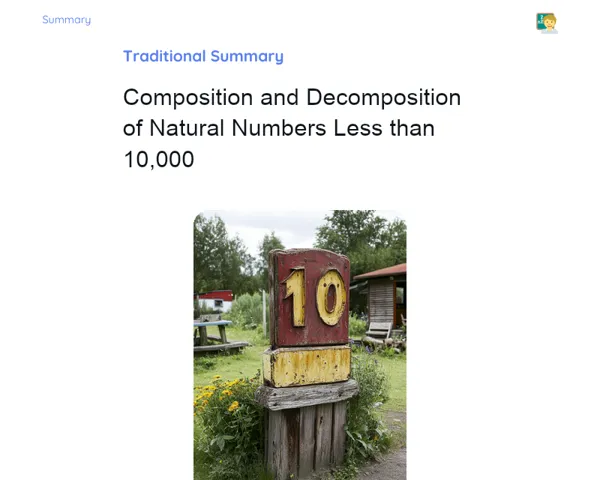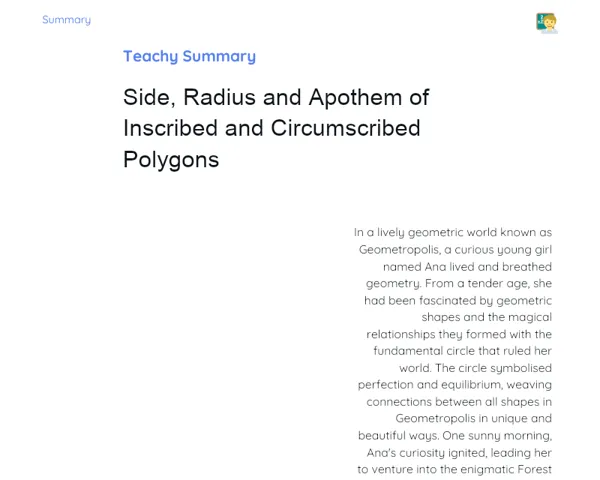Objectives
1. 🎯 Understand and differentiate how quadratic functions are represented in graphs and tables.
2. 🎯 Develop practical skills to sketch graphs of quadratic functions and apply this knowledge in real-life and simulated scenarios.
Contextualization
Did you know that quadratic functions are key players in a variety of fields, from engineering and physics to economics and biology? For instance, the trajectory of a thrown object or the shape of a satellite dish can be explained by quadratic functions. This adaptability makes grasping these functions essential not only for mathematicians but for anyone with an interest in science and technology. Let’s dive into how these functions influence the world around us and how we can use them to predict and understand both natural and man-made phenomena.
Important Topics
Equation of a Quadratic Function
The equation of a quadratic function is generally expressed as y = ax² + bx + c, where 'a', 'b', and 'c' are real coefficients and 'a' cannot be zero. This equation represents a parabola, which is a smooth curve that displays axial symmetry. The direction in which the parabola opens and the location where it crosses the y-axis (known as the vertex) are determined by the coefficients 'a', 'b', and 'c'.
-
The coefficient 'a' indicates the direction of the parabola’s opening (upwards if a > 0, downwards if a < 0) and its curvature.
-
The vertex of the parabola is found at the coordinates (-b/2a, f(-b/2a)), where f(x) is the function.
-
The coefficient 'c' denotes the point where the parabola intersects the y-axis, referred to as the constant term.
Graph of a Quadratic Function
Sketching the graph of a quadratic function visually demonstrates how variations in 'x' influence the value of 'y'. This graph takes the form of a parabola on the Cartesian plane. The symmetry of the parabola and the vertex's position are crucial for comprehending the function’s behaviour.
-
The line of symmetry for a parabola is a vertical line that goes through the vertex.
-
The gap between the vertex and the y-axis is termed the 'focal distance' and indicates how wide the parabola is.
-
The roots or solutions of the quadratic equation are the x-values where y = 0.
Value Table
A value table is a structured approach to listing ordered pairs (x, y) that meet the quadratic function's equation. These tables are helpful for visualising and analysing how the function behaves for various values of x. Compiling tables assists in understanding how changes in x impact y and vice versa.
-
Each row in the table corresponds to a point on the function’s graph.
-
Incorporating negative, zero, and positive values of x provides a well-rounded view of the function’s behaviour.
-
The accuracy of the table's results relies on the number of calculated points, which can be expanded for improved clarity.
Key Terms
-
Quadratic Function: A polynomial equation of the second degree that describes a relationship between two variables and is usually graphically represented by a parabola.
-
Parabola: A geometric shape that is symmetrical around an axis, resulting from a second-degree equation.
-
Vertex: The point where the parabola changes direction; it is also the maximum or minimum of the function, depending on the concavity.
For Reflection
-
How do alterations in the coefficients 'a', 'b', and 'c' of a quadratic function's equation influence the graph of the parabola? Please give examples.
-
Why is it crucial to grasp the symmetry and vertex of a parabola when studying quadratic functions?
-
In what ways does the value table assist in visualising the behaviour of a quadratic function, and how can this be related to real-life scenarios?
Important Conclusions
-
We've established that quadratic functions are remarkably versatile and vital for illustrating both natural and man-made phenomena through parabolas.
-
We've learned to identify and depict these functions in graphs and tables, exploring how the coefficients influence the shape and location of the parabola.
-
We’ve discussed the practical applications of these functions across various fields, such as engineering, physics, and even day-to-day challenges, underscoring the significance of mastering this content.
To Exercise Knowledge
- Creative Modelling: Pick a natural occurrence or a creative phenomenon and model it using a quadratic function. For example, the growth of a plant, the motion of a rocket, or the design of a piece of art. Explain how you selected the coefficients and your reasoning behind those choices. 2. Data Analysis: Assemble a table with values for time and distance of a moving object. Use this data to create a quadratic function that depicts the object's movement and graph it. 3. Problem Solving Challenge: Imagine a scenario where you need to optimise a specific variable (like cost or time) and model it with a quadratic function. Work through the problem mathematically and interpret the solution in practical terms.
Challenge
🚀 Parabolic Gadget Challenge: Design a toy or gadget that employs the properties of a parabola. It could be a projectile launcher, a solar light focusing device, or anything your creativity allows! Sketch the design and explain how the quadratic function contributes to the gadget's operation.
Study Tips
-
Use digital tools like GeoGebra or Desmos to visualise and manipulate different quadratic functions, testing various coefficients and observing the changes in the graphs.
-
Look for examples of quadratic functions in your day-to-day environment, such as in architecture, design, or sports, to see the maths in action.
-
Practice tackling problems by varying types of quadratic equations and understanding how methods like factoring, completing the square, and applying the quadratic formula are utilised.



